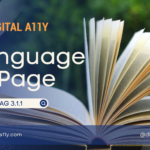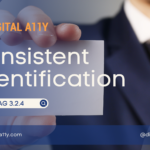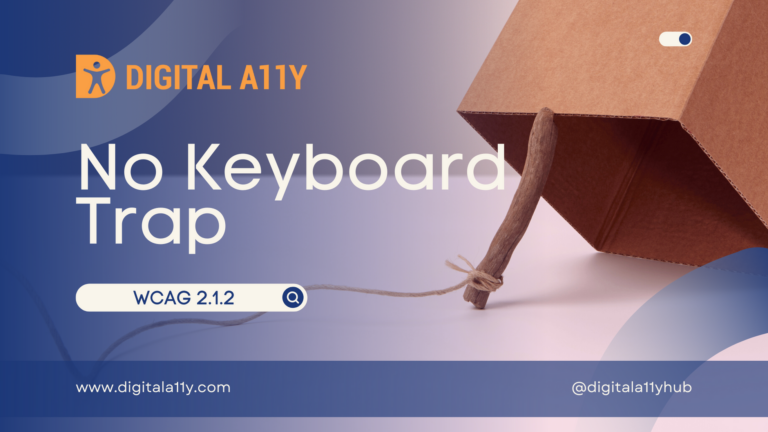Understanding WCAG SC 2.4.1 Bypass Blocks

2.4.1 Bypass Blocks: A mechanism is available to bypass blocks of content that are repeated on multiple Web pages. (Level A)
Bypass Blocks Transcript
Hello everyone, today we’ll be diving into the importance of bypass blocks, a crucial aspect of web accessibility that ensures a seamless experience for all users. We’re also going to talk about its importance, some exceptions, examples, who benefits from this, and how we can fix them.At the heart of web accessibility is the importance of providing a mechanism to bypass repetitive content blocks. This includes navigational menus, advertisements, or any content that might be repeated across multiple web pages. This success criterion benefits a wide range of users, from screen reader users navigating multiple pages to keyboard users seeking efficient access and individuals with cognitive limitations. Everyone gains from a well-implemented skip mechanism.
While the rule is to allow flexibility, there are some exceptions. Certain applications, like a banking app capturing a check, may require a specific display orientation for functionality. The same goes for a piano app optimized for landscape mode.
Let’s delve into some examples. Imagine a news website where a “Skip to Main Content” link allows users to skip extensive blocks and go straight to the main story. Or, consider an e-commerce site using a skip link to swiftly bypass filters and access product results.
So, how can we meet this criterion? Provide skip links at the top of your page linking directly to the main content. Group blocks using ARIA landmarks or headings, ensuring clarity in purpose and visibility when receiving focus. It’s about creating a smooth navigation experience for all users.
In conclusion, bypass blocks are a cornerstone of inclusivity. By incorporating skip mechanisms and thoughtful design, we pave the way for a web that welcomes everyone, regardless of their abilities. Thank you for joining us today in understanding the importance of bypass blocks. Together, let’s contribute to a more inclusive digital landscape. See you in the next session.
This is the end of the video. Thank you for joining. If you like the video, do like and subscribe.See you in the next session!
The intent of this success criterion is to provide a skip mechanism that will enable the users skip the repeated content blocks such as navigational menus, advertisements or help the users to jump to a particular location on the web page. The mechanism can comprise of “Skip links”, landmarks and/or headings or a combination of any of these.
While Assistive technologies such as screen readers provide a mechanism to jump according to headings, landmarks, lists & form controls it is always a best practice to provide a skip link at the top of the page & where ever it is appropriate.
Example
Code
<a href=”#jump”>Jump to references</a>
<h2 id=”jump”>references</h2>Video On How to Provide Skip Links
In the above example we have used id method to create a skip link & this is one of the easy ways to provide skip links. There are more optimized ways of providing skip links! Checkout the scripts provided by PayPal.










